Capital cities of large empires throughout history have been melting pots. Traditions and people have blended and braided with each other to give rise to new peoples and novel traditions. Calcutta, in the gas lit era, was no different. One of the most arrestingly beautiful testaments to this blending can be seen in several distinctive artistic traditions that arose in the city during its heydays. There was, to begin with, the famed Company School of painting that developed around the dawn of the nineteenth century. It combined the traditions of Mughal miniatures with European natural history drawings. Towards the end of the century again there was the equally famed and beautiful Bengal School that sought to blend classical Asian themes with the stylistic emphases of European high art. Both the Company School and the Bengal School are well-known and rightly celebrated. In between these two and much less celebrated was a tradition of Anglo-Indian commercial art.
Mostly produced by artists of the local Eurasian community, this art developed to serve the new nineteenth century print and commodity markets. Ranging from book illustrations to greetings cards and picture postcards, unlike either Company paintings or the Bengal School’s paintings, this art was never meant for the museum. Instead, it circulated seamlessly through the eddies of everyday social life. Few of these artists or their art have been properly preserved or studied. And yet, a lot many more people had interacted with this art than the more specialized or formal artistic works.
The one slight exception to this general neglect is the work of Frank Clinger Scallan. A couple of recent accounts of Scallan’s beautiful illustrations by Sujaan Mukherjee have revived interest in his works. But most other illustrators and artists of this era remain exiled to obscurity. Amongst these latter is George Darby.
I first encountered Darby in trying to track down the artist of a set of enigmatic Calcutta Christmas Cards published by the famous Thacker, Spink & Co. in the first decade of the 20th Century. Initially, I had not even been sure of the name of the artist, who only signed his name as “Geo. D”. Over the years however, I have managed to track down his signatures and get a glimpse of a fascinating oeuvre. Unlike Scallan, whose contemporary he was, Darby seemed to have stuck almost exclusively to caricature and figure drawing. I have not yet found any evidence of his having done anything like the lavishly colored watercolors or the richly shaded pencil sketches that Scallan produced.
What Darby did share with Scallan however, was his effort to localize his art and ground it in the bustling social world of Edwardian Calcutta. This was in fact what had first caught my eye about his Christmas Cards. The scenes, the figures and the humor were all grounded in the social world of the city and in stark contrast to the usual Christmas Cards that idealized distant northern European winter scenes. Subsequently, delving into Darby’s non-Christmas art has further confirmed this impression. Both the picture postcards he produced and the book illustrations bear eloquent visual testimony to Darby’s efforts to artistically represent his city. It was little wonder then that the few brief mentions to him always referred to him as “George Darby of Calcutta”.
The high point of his artistic production seems to have been a small booklet titled Calcutta Curiosities. First published in 1912, the booklet was republished at least twice in 1914 and 1920 and contained a series of pen and ink sketches of the characters, scenes and sites, that gave the city its own distinctive identity. Unlike the guidebooks sold to attract tourists to the City of Palaces, Darby’s booklet contained no illustrations of grand monuments or lavish buildings. Instead, he dwelt lovingly upon such hallowed local institutions as corner shops, pice hotels and barber shops that scaled the city down from the palaces and brought it within the reach of the average denizens.
The core of Darby’s art are his character sketches. His character sketches were deeply empathetic without being maudlinly sentimental and humorous without being judgmental. He depicted a wide variety of characters from multiple different strata of Edwardian Calcutta with an even handed candor that included everyone from the Old Colonel and the street peddler selling peanuts to the young Eurasian and Bengali dandies in their respective finery. Though the sketching of social ‘types’ is frequently a way of stereotyping, interestingly Darby’s sketches of each ‘type’ often included multiple different versions of ‘the type’ within the same drawing, thereby forestalling any clear stereotyping. Images of both the Bengali Babu and the Eurasian depict multiple versions of these ‘types’, from the wealthy to the working class and from the obese to the skinny. It seemed as if Darby’s attentive eye was straining against the inherited forms of fin-de-siecle social caricature.
One particular series of illustrations clearly demonstrates the way Darby tried to stretch the formal limits of social caricature. These are a series of at least eight picture postcards issued by Thacker, Spink & Co., wherein various occupations are compared between the ‘East’ and the ‘West’. I only became aware of this series recently after seeing them in the collection of Mr. Gautam Mitra. Each card in the series presents a pair of contrasting figures performing the same task. Notwithstanding the presentation of a series of such contrasts that could easily have been part of the usual colonial propaganda about colonial inferiority, what Darby manages to bring out is actually the symmetry and similarity that underlay the superficial differences. Using the well-heeled theme of contrasts between East and West, what he ends up depicting is the comparability of distinct social roles without denigrating either.
No character however, is more movingly and humorously depicted than Calcutta’s ubiquitous crows! Through a variety of actions, situations and emotions, Darby’s crows embody the sociality, garrulousness and vivacity of the city way more than any of his humans can. It is hardly surprising then that Darby chose to knight this remarkable avian citizen by referring to it as Mr. Ubiquitous Crow, C.I.E.
Darby was equally fond of depicting modes of transportation. But again, unlike the more common illustrations of grand horse carriages drawn by expensive Whalers or the opulent descriptions of elephant rides, Darby trained his eye on the humdrum modes of everyday urban transport for the common Calcuttan. Ranging from the bullock and buffalo carts to the finely “class” graded horse taxis or ‘ticca gharris’ (theeka gari). What stands out most in these sketches of transportation is the sensitivity with which Darby depicts both the coach and cart-men as well as the animals drawing the vehicles. The vigor of the buffalo cart-man and the quiet dignity of the first class horse cabby are as easily visible in his sketches as the bullock’s languor and the jadedness of the third class cab-horse.
George Darby’s sketches evoke a world that is imperial in scope, but workaday in scale. Denuded of its pomp and bluster, it is a world whose richness lay in its intricate sociality and indomitable joie de vivre, rather than its affluence and political authority. In Darby’s eyes what made the imperial capital unique was its people, its animals and its distinctive ways of being more than the palaces and parades. Darby’s art was not descriptive, it was illustrative and evocative. He did not capture the city through his images, he set it free by alluding to the stories that lay behind the characters, animals and social spaces he sketched. Perhaps that is why he himself remains today an elusive presence in history. His biography remains hidden behind the pall of time even as his art illuminates an inquiring eye and an empathetic, artistic hand.
Darby’s Characters Sketches:-
Traveling and Shopping in Darby’s Calcutta:-
Darby’s East and Darby’s West:-
Darby’s Christmas:-
Darby’s Postcards:-

Acknowledgements:- I am grateful to my old friend, Prof. Saurabh Mishra of the University of Sheffield, for his help in obtaining a copy of Darby’s Calcutta Curiosities. I am also indebted to Mr. Gautam Mitra of Calcutta for enlightening me about the East/West Series of cards. The images of these cards as well as the cards titled “Calcutta in the Strand” and “An Alfresco Toilet” are shared by the courtesy of Mr. Kaushik Bhattacharyya. My sincere thanks to him.
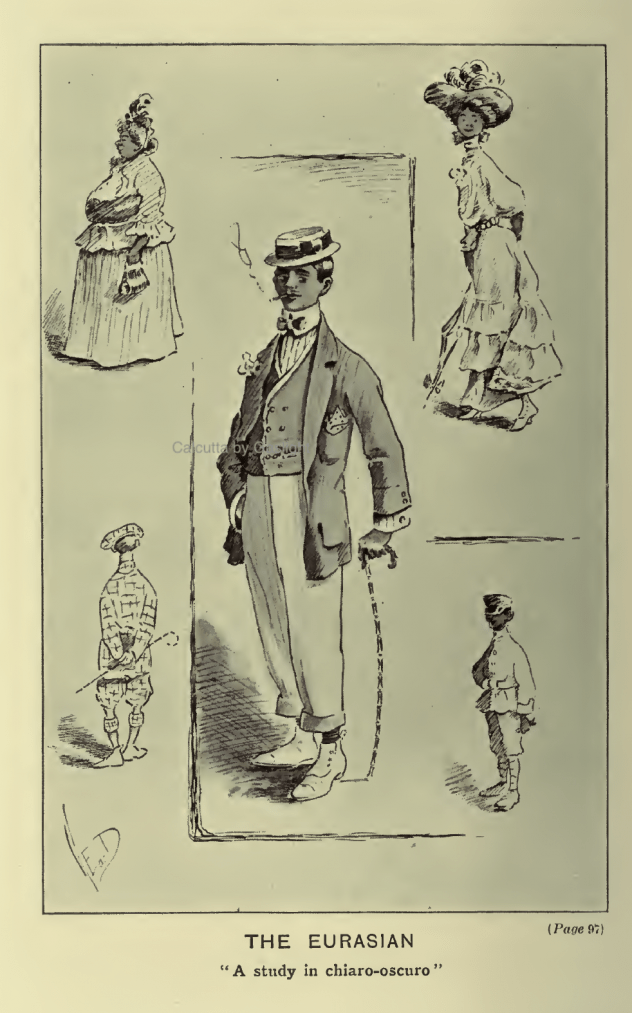
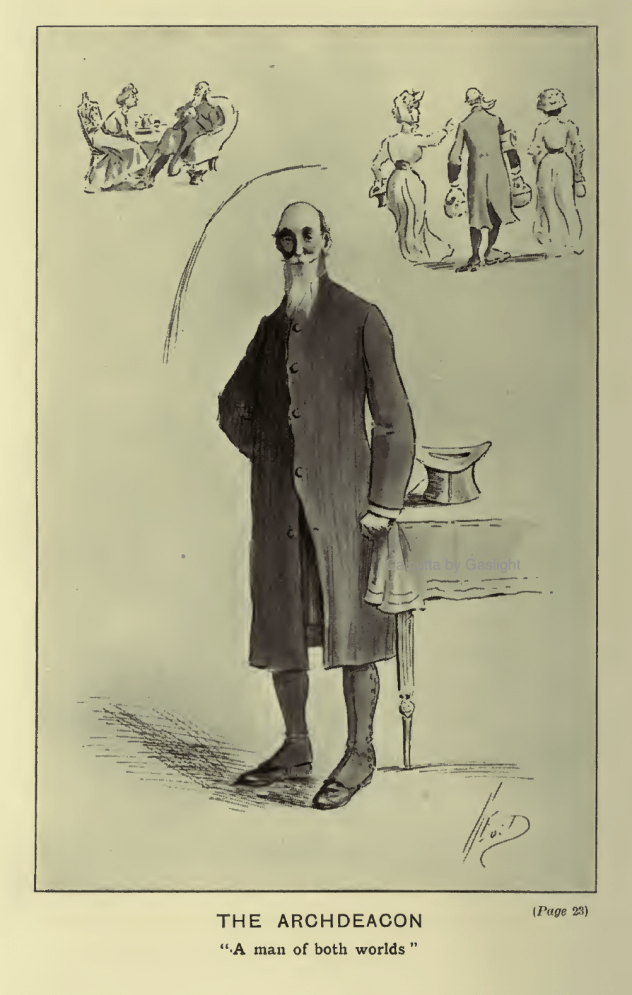
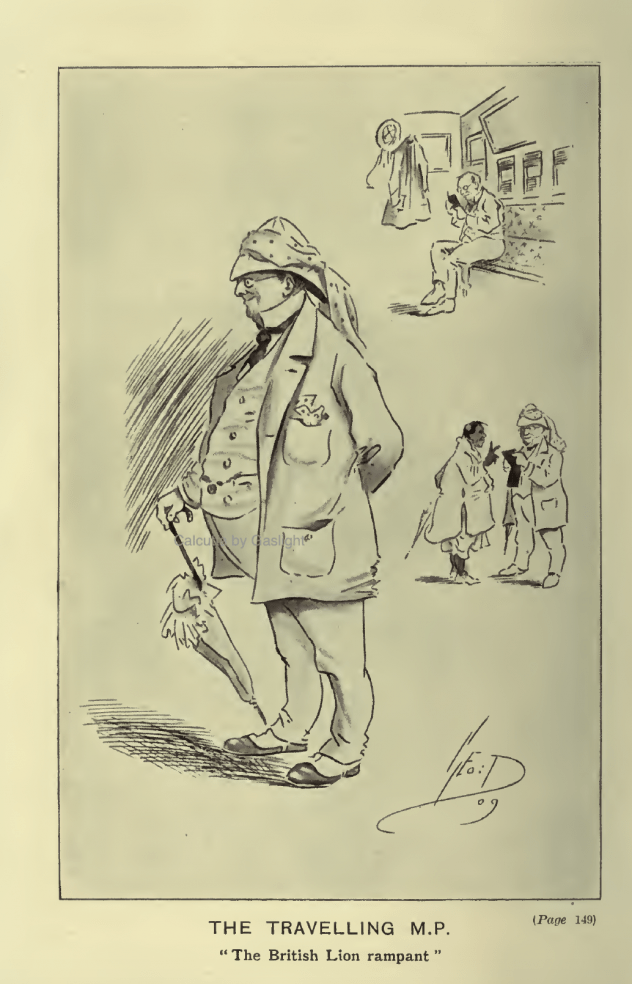
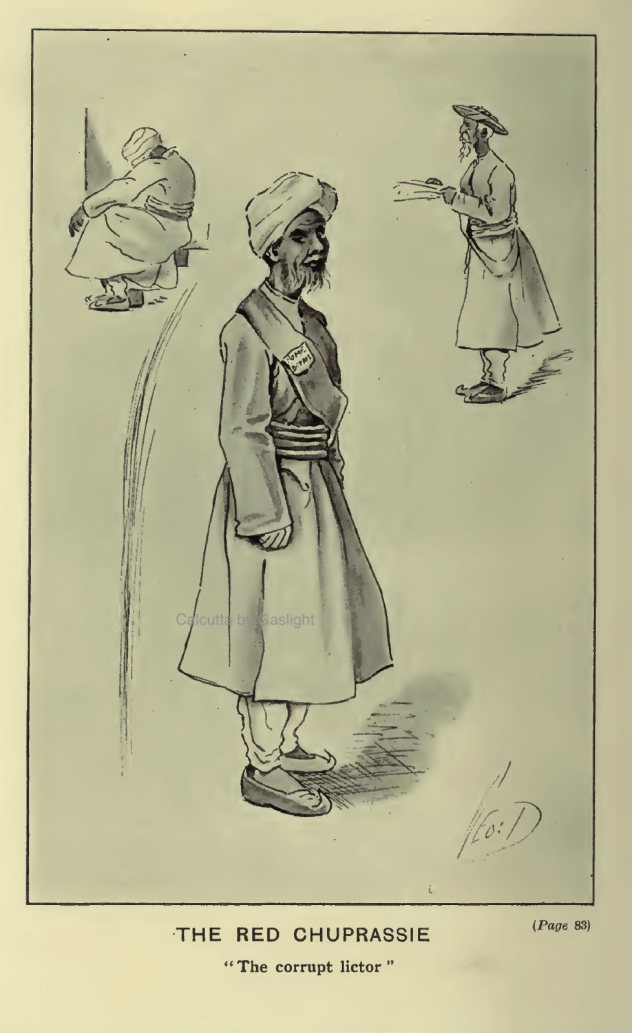




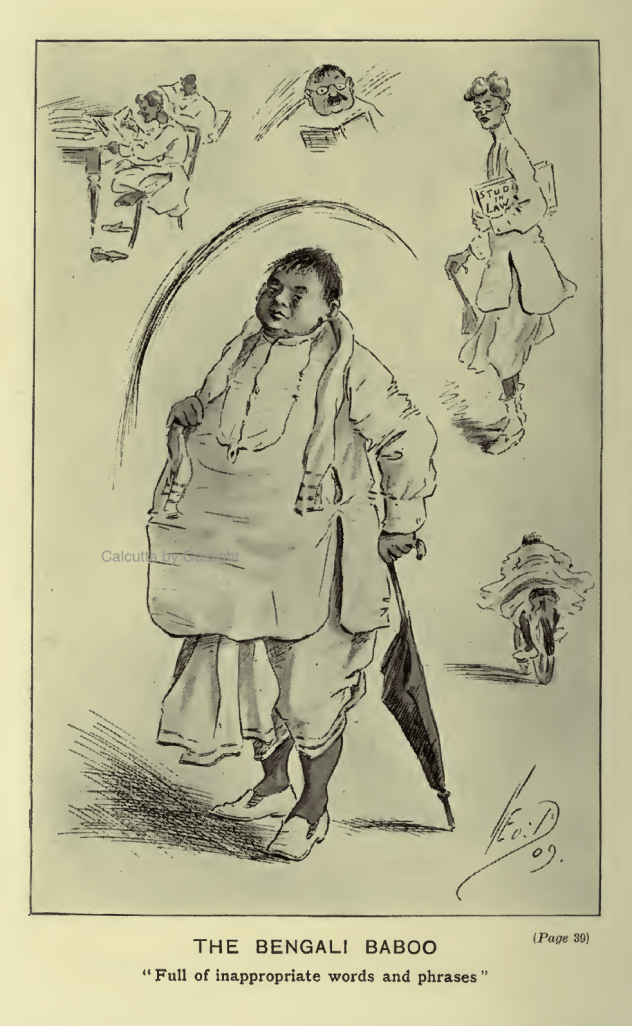
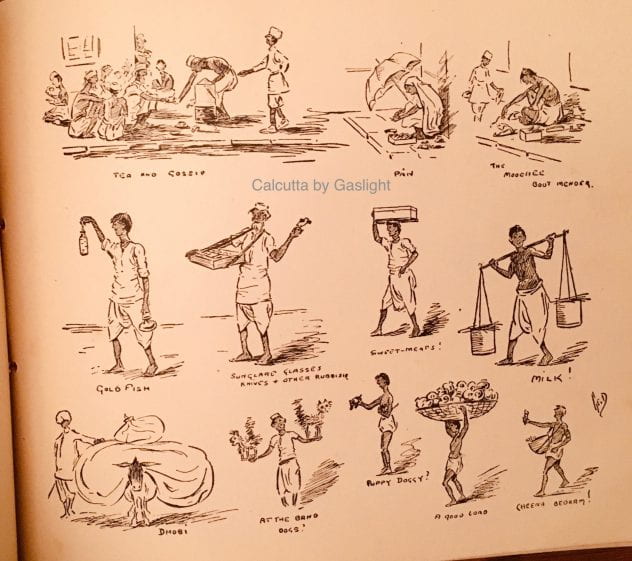
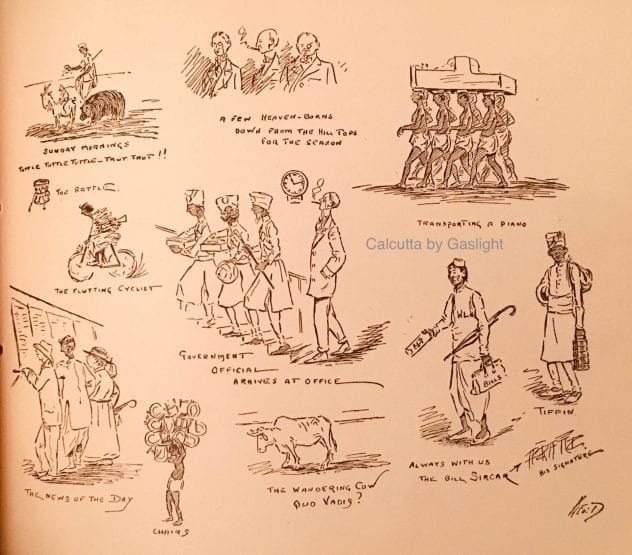

















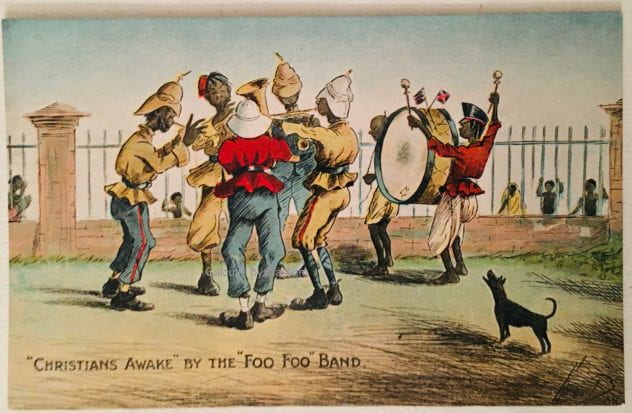



The article is really well written specially when we know very little about George Darby.In this connection i would like to mention that the East West series postcards shown here are from my collection only.I have another of George Darby’s works which I can share with you if you wish.
Many thanks for telling me about your collection, Mr. Bhattacharyya. I have now acknowledged your collection and contribution. It is wonderful to meet a fellow George Darby enthusiast through this site.
Thank you very much.
Thanks for the wonderful prints and interesting account of this talented man. I would be interested in learning more about him. Do you know of any published accounts or information on the internet? My quick search has not even revealed the dates of his birth and death or how long he was resident in India. I came across him in reading George Aberigh-Mackay’s “Twenty-One Days in India” (8th edition, 1910).
Alas. I too have not been able to find out much more than what I have here. I have tried to curate as many of his images as I have been able to find in one place, but beyond that I have not had much luck. He seems to have been from Calcutta and was likely of mixed heritage, as were some of the other commercial illustrators of his time. Biographically, that’s pretty much all I have. It is unfortunate that we know so little about such a talented artist. Sorry.
Thanks very much for your prompt response. His talents deserve greater recognition and it is good that you have made his work more available.
Many thanks for reading and appreciating this post. I keep looking whenever I can and maybe one day I—or someone else—will chance upon some information that’ll help us get to know the late Mr. Darby a little better. At least that’s the hope.
Thank you very much for you blog.